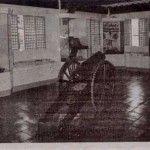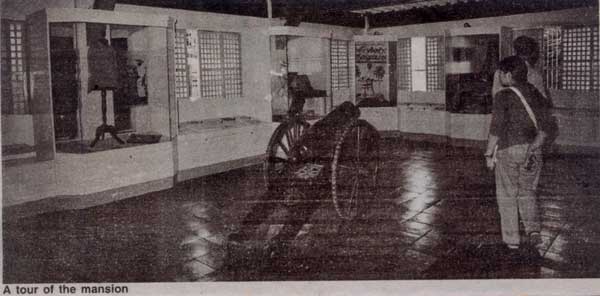 Do you know what it is like to be a curator or guardian of historical site?
Do you know what it is like to be a curator or guardian of historical site?
Let Alvin Alcid, the curator of Aguinaldo Shrine in Cavite, tell you all about his work. I met Alcid in 2004 while he and his staffs were busy preparing for the 106th celebration of Philippine Independence.
Alcid, is the Division Senior Historic Sites Development Officer of the National Historical Institute. He took over the management of Aguinaldo Shrine the century old national treasure replacing retired curator Rosalinda Aguinaldo, the granddaughter of Crispulo Aguinaldo, who was the elder brother of General Emilio Aguinaldo.
After the first curator, Corazon Andrade, Alcid is the third custodian of the century-old national treasure since Gen. Aguinaldo donated the ancestral house and its surrounding properties to the government in 1963. Gen. Aguinaldo died the following year.
The National Historical Institute is maintaining the shrine along with other 29 historical sites and museums nationwide. Alcid got assigned in three shrines since joining NHI. He served as tour guide in Fort Santiago in Intramuros before he was transferred to the NHI Museum of Philippine Political History along Kalaw Avenue, Manila as curator.
The Aguinaldo Shrine, which was originally built in 1845, sits in 1,300 square meter lot area. It had undergone several expansions and renovations since it was built in 1849.
It is one of the prominent sites in Cavite. The two other sites are the Ancestral House of Baldomero Aguinaldo in Binakayan and the place where Andres Bonifacio was tried in Maragondon.

The author with Alcid (partly hidden), taking a tour of the mansion.
As a curator, Alcid maintains the orderliness of the shrine. He entertains guests, and supervises other activities like the birth and death anniversaries of Gen. Aguinaldo. He was also involved in book launching and networking with other historical associations of Cavite.
Alcid loves to work at the shrine because he feels that he is part of history. He has access to historical relics which ordinary people do not have.
“When ordinary people visit a museum, they will just look at a piece of history. But we, who work in the museum, are the ones who clean that item, read that particular document that you would not be able to read in any library or bookstore,†Alcid proudly said.
